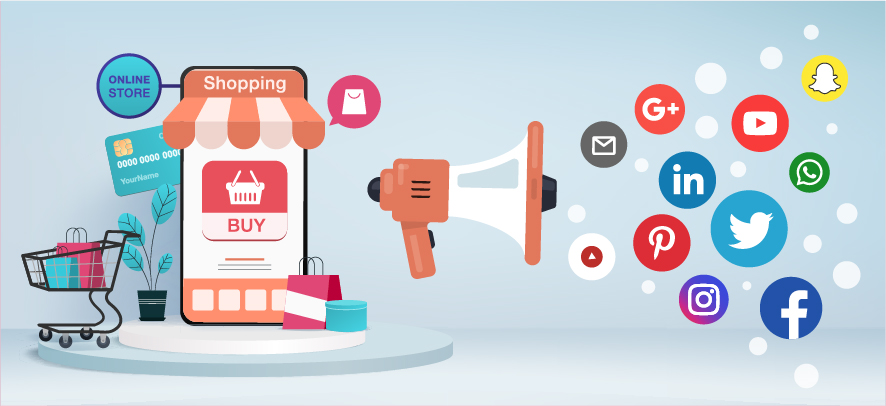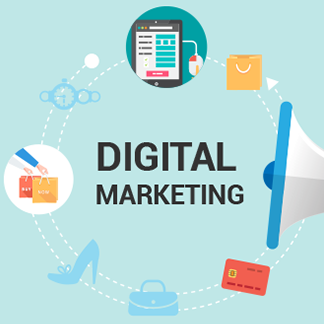How to get started with social media marketing for your online store

Ecommerce
204 week ago — 10 min read
“Social media enables a small business to earn eyeballs and ears." - Guy Kawasaki, Chief Evangelist, Canva
As social media is increasingly becoming an intrinsic part of people’s daily life, it is an obvious choice to market to potential customers on these channels. Social media can help your online store by establishing stronger web presence, generating leads, listening to what customers are saying and increasing sales.
The question is, how can your online business create maximum impact on social media at minimum cost?
Here are some simple tips to help you get started with social media marketing for your online store.
Create a social media strategy
A social media strategy outlines everything you plan to do and hope to achieve, using social media. Your eCommerce store needs to be the centre of your strategic planning. The more specific your plan is, the more effective it will be.
To make your strategic planning process easier, follow these five steps.
- Set goals: Without goals and objectives, you will have no way to measure your success and Return on Investment (ROI)
E.g., We will use Instagram for increasing our product awareness and sales. You can then track your Instagram posts and stories views, see what kind of posts are doing well and keep track of orders through Instagram.
- Establish your target audience: Create your target persona—know their age, location, average income, interest, favourite social media platforms and what they want to see on social media.
- Track what your competitors are doing: There are high chances that your competitors are already using social media, so you can learn from what they are doing effectively.
- Decide your channels: There are many social media platforms available; choose the ones where your target audience is the most active.
- Executive the plan: Set up the tools to execute and evaluate your strategy.
With Instagram, Facebook, Twitter, LinkedIn, Youtube, Whatsapp, there is no shortage of places for you to build a presence for your brand and each of these platforms has its own USP.
Instagram – Increasing following and engaging followers
Facebook - Business page and paid promotions
LinkedIn – Professional network and company profile
Twitter – News and networking
YouTube – Engage subscribers using video content
WhatsApp – Easy customer interaction and sharing of information
Let’s look at some easy tactics to maximise your customer reach using these social media platforms.
1. Plan your content
It is important that your content provides value to your followers. Most people use social media as a means of taking a break between tasks. So, you don’t want to overload your customers with too many self-promotional advertisements that are somewhat annoying. Follow a strategy where you post about other things that resonate with your brand identity, along with posts about your products. Your content plan should also include the platforms you will post on, along with the frequency and time of posts.
2. Create attractive visual content
For Facebook and Instagram, visual content rules the roost. Your posts can feature attractive photos of your products and customers using your products. You can also shoot a short video on your mobile while packing an order and post that. Create visuals that grasp attention.
Read this article on why visuals are important and how to use images to create a cohesive brand identity.
3. Use the right captions and hashtags
A good caption will add context, showcase your brand’s personality and engage the audience. Your Instagram captions can be up to 2,200 characters in length, include emojis, and must include the right hashtags. Instagram uses hashtags (#) to allow users to search for content by different keywords. If you use a hashtag that is popular, your post can be seen by many users searching it. If your accompanying visuals and content is engaging, it could even become a top post. Hashtags also make it easy for people to find you.
Read this article on how to create trending hashtags.
4. Make sharing your products easy
Imagine the traffic you could generate if you link your online store with your social media channels. Social media buttons are an integral component of growing a brand’s ‘conversion rate’ which can in turn, boost traffic and increase online sales. Customers who like your products could then directly share your online store on their post/story or with their friends using social media.
Read this article to learn how you can add these social media buttons to your online store for free.
5. Reach out to customers to review your products
Ask your customers to share reviews about your products using the story/post feature on Instagram or Facebook. This creates a sense of trust amongst the audience and it is a great way to increase your online sales. These reviews help you engage with followers of that customer, and you can also repost them on your account to engage your followers too. Reviews act as fresh content and help drive traffic from social media to your eCommerce website. In simple words, customer reviews act as your word-of-mouth marketing.
Read this article on the power of testimonials to boost your eCommerce sales.
6. Offer personalised customer service
Your social media accounts open a communication channel with your customers and you could use this channel to provide customer service support. Since you would be interacting with your customers on a one-on-one basis via direct messaging, you could offer them a more personalised service. You can also interact with customers by responding to the comments they leave on your posts. Facebook also lets you schedule an auto-reply message, indicating that you will answer questions as soon as possible.
7. Start a Facebook shop
You can directly sell to your followers on Facebook by adding a shop feature on your Facebook business page. This allows you to meet your customers where they already are. Facebook shop section connects with your eCommerce store so that users can purchase within the Facebook interface. Learn how to open a Facebook shop.
8. Use chatbots for Facebook messenger
According to a survey by Oracle, 80 percent of businesses want a chatbot in place by 2021.
With numerous technologies available today, machine learning is the most used because of its opportunities. Chatbots bring tremendous value to both the company and users. They are timesaving, personalised, make navigation easier, and provide the precise and necessary information. A range of different platforms support chatbots, but Facebook Messenger is probably the most important when it comes to dealing with shoppers.
9. Add a Facebook pixel to your online store
Facebook Pixel tool allows you to gather all the information about your target users, its behaviour being similar to Google Analytics. Even if you’re not thinking of running Facebook or Instagram ads yet, you must start collecting the data for when you’re ready.
Learn how to plug in Facebook Pixel to your online store.
10. Enable Instagram shopping feature
500 million people use Instagram daily, and 50% of them follow at least one business —not promoting your business to such a large audience is just a huge loss. Instagram’s shop feature allows you to integrate your product catalogue with your Instagram profile, enabling you to endorse your products directly to Instagram users via posts/stories in the explore tab, and it also adds a shop button on your Instagram page.
11. Interact with customers using Live video feature
Doing Live videos is an excellent way to interact with your audience in real time. Platforms like Facebook, Instagram, and Twitter offer this feature. But before you decide on a platform you need to understand where your audience is the most active and accordingly choose the platform. These Live videos can feature interviews, Q&As, sharing customer testimonials, product demonstrations, events etc.
12. Invest in advertising
Every social media platform has its own version of Pay-Per-Click (PPC) advertising. Social media ads help you to reach a larger and a more targeted base. Facebook gives you two options when it comes to creating paid content—you can boost content or create an advertisement. On Instagram, you can advertise through Instagram Stories in addition to regular advertising.
As computer scientist and entrepreneur Paul Graham says, “You can’t wait for customers to come to you. You have to figure out where they are, go there and bring them back to your store.”
And that is exactly what social media marketing does for your online store!
Also read: Design and market your way through customers' minds with these resources
Click here, if you are looking for assistance to get started with social media marketing for your online store.
Posted by
GlobalLinker StaffWe are a team of experienced industry professionals committed to sharing our knowledge and skills with small & medium enterprises.
Network with SMEs mentioned in this article
View GlobalLinker 's profile
Most read this week
Trending
Ecommerce 6 days ago
















Comments (2)
Share this content
Please login or Register to join the discussion